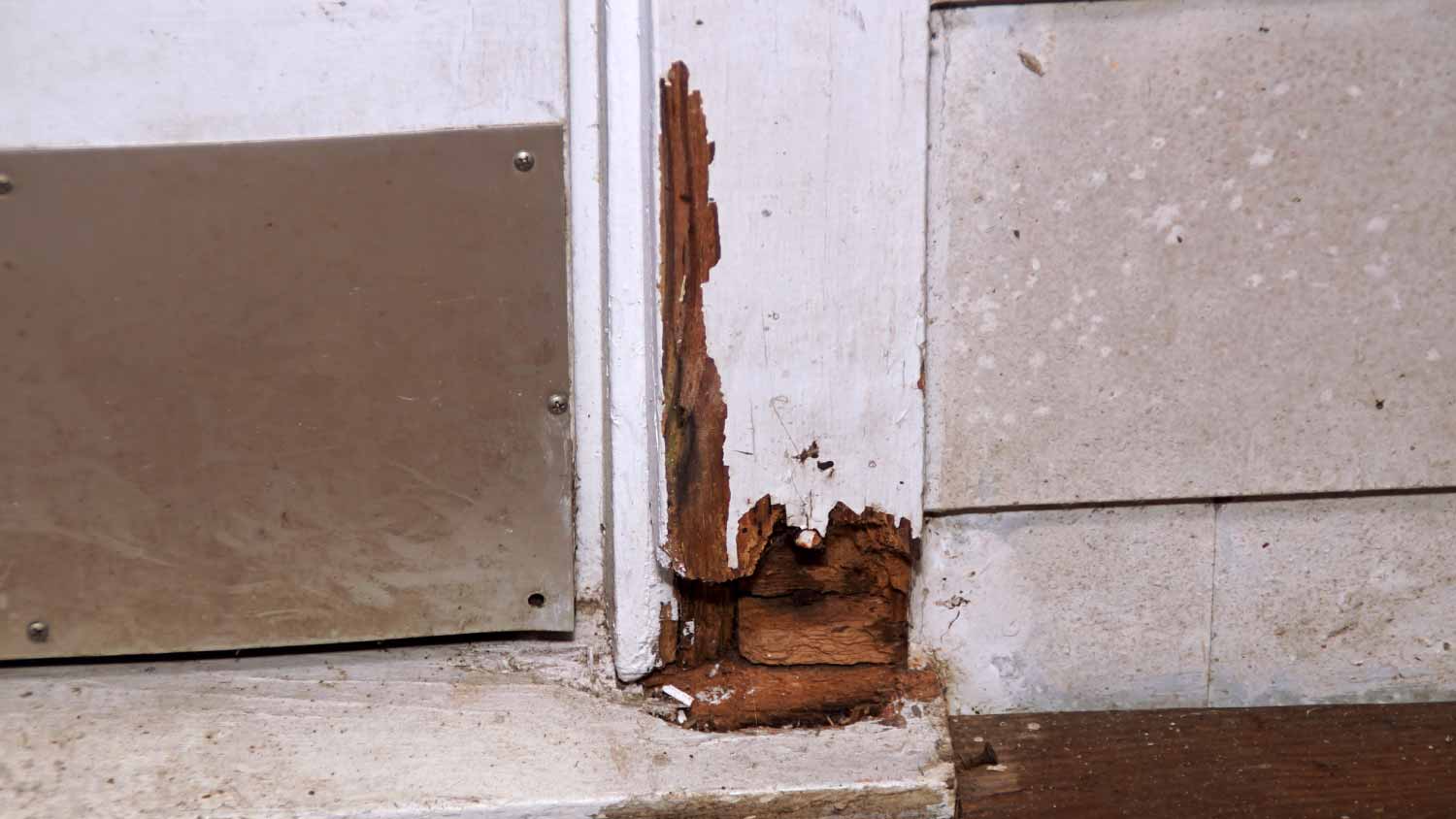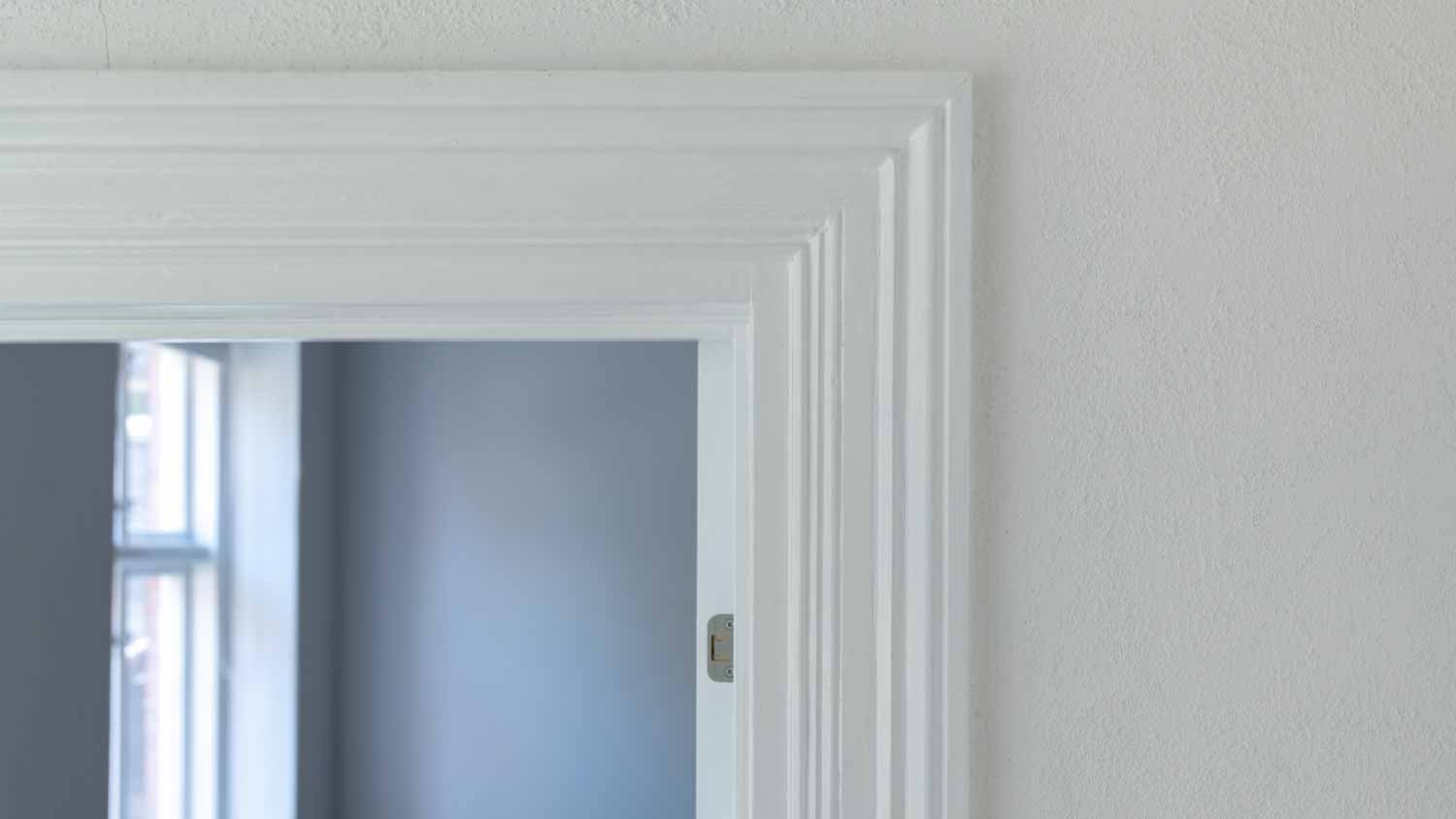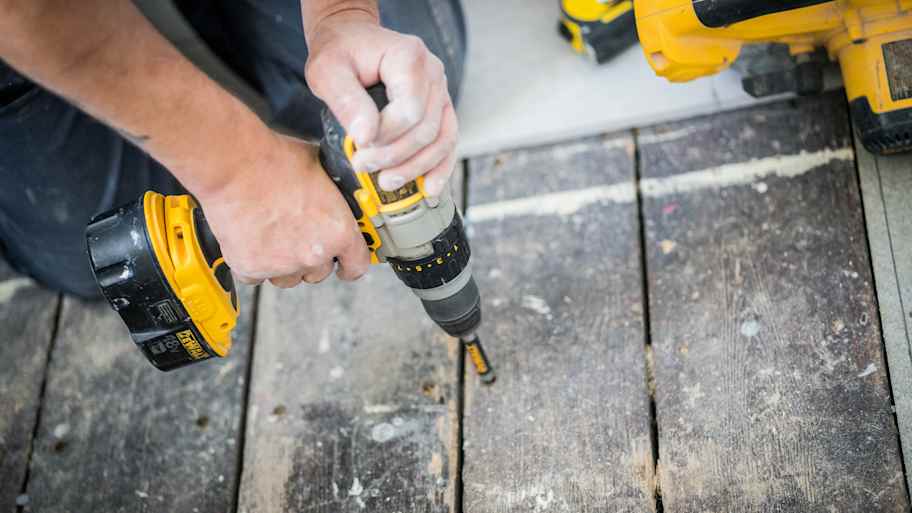
Screen door installation costs depend on size, type of frame material, and the number of doors. Here’s everything you need to know.
Keep the frame that holds your door free from rot


If not properly repaired, wood rot can quickly spread beyond what’s visible on the surface, damaging and weakening the door frame and surrounding structure.
Doorframe repairs often involve using power tools and require familiarity with woodworking techniques such as cutting, sanding, and sealing.
A professional door contractor has the tools and materials needed to fully remove decay and restore the door frame’s structural integrity.
Wood doorframes are functional and aesthetically pleasing, as nothing beats the look of real wood. However, these frames are susceptible to wood rot when exposed to moisture and mold, with exterior frames at particular risk for the dreaded rot. Putting in a new doorframe costs $200 to $550, so avoid this hassle by quickly identifying the problem and restoring your wood doorframe to its former glory.
Here are some telltale signs of doorframe rot. Keep in mind that these signs are for rot that is fairly far along. To catch a rotting doorframe at the earliest stages, hire a local door contractor for a professional examination.
One of the quickest ways to identify doorframe rot is to look for crumbling wood. You can do this by examining every doorframe for obvious splinters. For a more thorough approach, use a screwdriver to gently poke the frame and feel for softness in the wood, crumbling, or splintering.
Next, look for dark areas throughout the exterior of the doorframe. These dark areas can indicate the presence of mold, mildew, or water damage, all of which are precursors to wood rot. The sections of the doorframe closest to the ground are particularly susceptible to damage from splashing rain, so start your examination at the bottom and work your way up.
Rot warps the wood, making it difficult to shut the door properly. If your doors won’t shut or they struggle to open—a common door problem—the frame may have rotted.
If you think the wood frame is rotted, don’t worry—there are ways to repair or replace the damaged wood and get your frame looking and functioning like new.
If the rot is pretty shallow, you can sand and refinish it to bring life back to the frame. But, if done incorrectly or if you don’t get all the rotted wood out, you’re actually just putting lipstick on a pig.
Wood rot is actually a fungus, so even if it looks like it’s gone, it can continue to spread if you don’t treat the underlying issue. So, when in doubt, remove more wood than you think is necessary.
Start by removing any rotted wood. You can use a chisel or scrub with a wire brush, taking extra care to remove all affected wood.
Use a handheld vacuum or air compressor to remove any dust or debris.
Sand the area with a 60-grit paper until the area is smooth.
If there are any holes, use a filler (like an epoxy wood filler) and sand it down.
Clean the area again with a dry cloth or small brush.
Paint or stain the wood frame. To stabilize the wood further, consider applying a wood hardener as well.
This method is only applicable when the wood rot hasn’t spread throughout the entire frame, though you can repeat this process for several infected areas.
Start by measuring the damaged area you previously identified using a tape measure, a ruler, or a preferred measuring tool.
Remove any weather stripping before going in and making any cuts.
Use your preferred tool to cut away the rotted area, choosing from chisels, saws, knives, or related gadgets.
Confirm the measurements of the removed area and shop online or at a hardware store for a replacement kit. These kits include everything you need to cut out and install a new piece. But if you have experience with this type of thing, skip the kit. Cut your replacement piece using the same type of wood, and fill in the space with an epoxy wood filler.
After installing the new piece, sand any seams or cracks to create a smooth and seamless doorframe.
Prime and paint the area to match the rest of the frame.
Polyester filler won’t rot and is easy to paint, making it a great choice for smaller patches of rotting wood that don’t require an entire replacement piece.
Start by identifying the rot and removing it with a utility knife or any other preferred tool.
Coat the area with a wood hardener and mix in the polyester filler as the instructions indicate.
Use a putty knife to press the compound into the recess left by the wood rot, filling up any available space.
Shape and smooth the compound with the putty knife and a wood chisel, adding more layers if necessary. Keep in mind that polyester filler dries in 15 minutes, so work quickly.
Once dried, carve off any excess or sagging filler using the putty knife or chisel.
Use a sanding block or sandpaper to smooth out the area. Work carefully here, as there is no time limit.
Prime and paint the impacted area to match the rest of the doorframe.
If you’ve already got the tools, you can frame a door yourself in about five steps.
Measure the height and width of your door and mark the opening at the top and bottom plate.
Cut the lumber for the doorframe with a miter saw. You’ll need to cut a bottom plate, two king studs, a header, and two jack studs.
Attach the sole plate, king studs, and jack studs to their appropriate location on the frame. Keep your level handy to ensure all pieces line up.
Install the header and support studs.
Remove the sole plate by cutting directly next to the jack stud using a reciprocating saw. This completes the rough opening. Secure all nails and clean the opening.
If DIY frame building feels a bit too complicated for your skills, contact a front door repair service near you to purchase a new doorframe and make the necessary installation. Going with a reputable pro ensures a successful installation, a quick turnaround, and peace of mind via work guarantees.

Wood rots when exposed to moisture and various forms of fungi. Due to millions of years of evolution, trees have many tricks to combat most forms of rot. Doorframes? Not so much. It only takes a small amount of moisture to invite fungal growth, such as mold spores. If left unchecked, the fungi reproduce and feed on the wood frame, leading to rot.
Wood frame rot impacts the door's structural integrity, leading to increased air drafts, higher energy bills, various structural issues, and water damage.
Once the issue is resolved, via a full-frame replacement or a DIY fix, follow some basic steps to prevent future rot in your doorframe.
Moisture is the main offender here, so start by addressing drainage issues.
Clogged gutters push overflow rainwater down into the door system below, so clear out those gutters every six months.
Take a look at your porch overhangs, ensuring they don’t funnel large amounts of water on or around the doorframe. Rejigger the downspouts so the water lands somewhere else.
An improperly installed storm door traps water in the space between the entry door, so hire someone to inspect it to ensure proper operation.
Install a sill pan at the bottom of the door to direct any water elsewhere.
Consider composite doorframes, which are better at resisting mold, mildew, and wood rot.
Regularly examine the doorframe to catch wood rot at its infancy, especially following rainstorms.
Based on data from Angi, about 31% of homeowners need to repair the frame of their doors. Locksets and hinges are the next most common parts of a door that need repair, at 10.7% and 9.6%, respectively. Check out the other most common parts of a door that need repair.

You can repair wood rot that’s minor or in a small area, but heavy wood rot that affects the structural integrity of the frame will require a doorframe replacement.
You can tell the difference between minor and major rot by how deep the damage is. Minor rot is on the surface level, while major rot runs deep into the wood. Check for the level of rot by prodding the area with a flathead screwdriver. If the spot has rot, it’ll feel soft and spongy. For more serious cases, the wood might compress as you push on it or even fall apart.
If you inspect the frame and only notice a handful of small areas with minor rot, you can go ahead with the repair. Take care to remove all of the rotted areas since rot can spread. But if you have major rot, plan to replace the doorframe.
As shown above, DIY fixes are available for small outbreaks of wood rot and can help homeowners save money. Professional door repairs cost $50 to $700, while frame piece replacement kits and polyester filler cost $10 to $50 and $20 to $90, respectively.
When it comes to extensive repairs like a full doorframe replacement, going with a professional with plenty of experience with wood rot yields the best results. These pros offer work warranties, a quick turnaround, and access to high-quality materials. The average cost of replacing a doorframe is about $400, including labor. The frame can cost anywhere from $80 to $500, depending on your chosen material and style.
For door repair projects, homeowners most commonly ask us to replace rotted wood on the outside of doors, window sashes, and sills.
From average costs to expert advice, get all the answers you need to get your job done.

Screen door installation costs depend on size, type of frame material, and the number of doors. Here’s everything you need to know.

French doors upgrade your space and fill it with natural light. Use this guide so that you can accurately budget the cost to install French doors.

When adding a fresh new entryway to your home, you may be curious about the cost of sliding glass doors. Let's break it down by size, style, and design.

Screen and storm doors offer protection and allow more natural light into your home. Uncover the critical differences between storm doors and screen doors.

Replacing the glass on a sliding door is a budget-friendly alternative to replacing the whole door itself. But is it a DIY project? Let's take a look.

Get expert insights on sliding glass door repair cost, including average prices, key cost factors, and tips to save money on your next repair project.